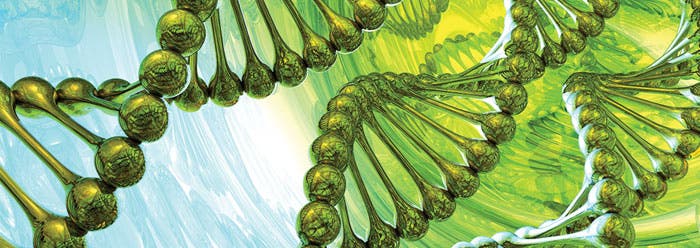It’s been only a decade since the Human Genome Project finished its task of mapping all the code that makes up our DNA. The hard part came later, though – identifying what each piece of code does or, oddly enough, does not. According to the most recent estimate for instance, only 8.2% of the code embedded in the human genome is actually useful, in the sense that it performs a function whether activating a gene, regulating it, and so on. The rest is what scientists class as “junk DNA”.
Genomes are like biological books, written in genetic letters known as bases; the human genome contains about 3.2 billion bases. The study led by researchers at University of Oxford in England found only 250 million of these letters are functional, and 2 billion or so are not. This might not seem like a really tiny amount, but it’s still considerably higher than a previous estimates which had the figure hovering between 3 and 5 percent. That’s not to say that previous findings were wrong. Instead, it has more to do with how each group classes functional DNA. For instance, a research published by the Encyclopedia of DNA Elements Project (ENCODE) found 80% of our DNA is ‘useful’. But the researchers counted all pieces of DNA on which some protein activity occurred, whether or not this was useful to the cell. The problem is that protein activity occurs all the time. When a cell divides, the DNA replicates and causes protein activity, but this doesn’t mean that particular code is useful.
“Whether people like it or not, the vast majority of our genome is junk,” said Dan Graur for LiveScience, a professor of molecular evolutionary biology at the University of Houston in Texas, who was not involved with the new study. “We know that because we have so many organisms that have much smaller genomes than we do and organisms that have much larger genomes than we have. The size of your genome is not really what matters.”
In this new study, the researchers used an evolutionary model to estimate which part of the DNA is useful or otherwise. This consideration was applied not only to the human genome, but others as well like cattle, ferrets, rabbits or pandas. This sort of novel analysis looks at how DNA has changed since all these mammals, including us humans, split from a common ancestor some 100 million years ago. The reasoning is that by looking at how many genes suffered the least amount of mutations you can count the useful ones – the less mutations the better the chance that the gene in question is useful. Like humans, just 8.2 percent of the DNA in each of these animals is functional, the findings suggest.
Even more interesting, just 1% of our genes code proteins that handle our day to day bodily functions, while the rest of 7% regulate these genes by turning on and off – which is just as vital, granted.
Some might be surprised by these kind of findings. How can it be possible such a thing as “junk DNA” exists? Wouldn’t nature find a way to eliminate redundancy? Why clutter DNA if there’s no use to it? Nobody knows for sure why, but the simplest answer is that nature isn’t perfect and life can be a mess. It’s enough to look at other organisms to understand that more DNA doesn’t equal more complexity. An onion’s genome is five times larger; the wheat’s is eleven times larger. Over millions of years, the human genome has spontaneously gotten bigger, swelling with useless copies of genes and new transposable elements. Our ancestors tolerated all that extra baggage because it wasn’t actually all that heavy. This is at least one side of the story.










